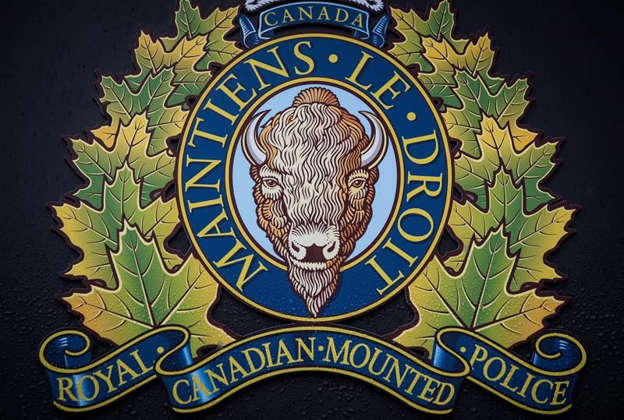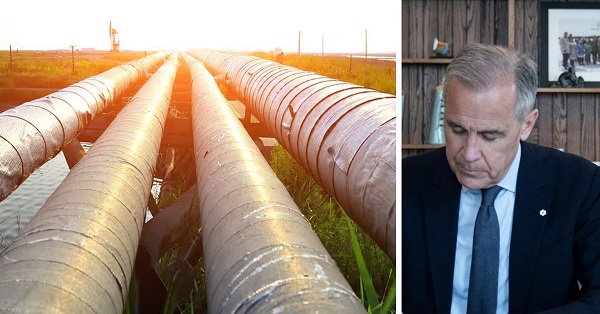Alberta
Integrated Border Enforcement Team makes 189 kg cocaine bust at Coutts port of entry

News release from Alberta RCMP
Canada Border Services Agency (CBSA) officers, working with the Integrated Border Enforcement Team (IBET) in Alberta, a joint force operation between the RCMP Federal Policing Northwest Region, CBSA and Calgary Police Service, seized 189 kg of cocaine following a secondary examination of a commercial truck seeking entry at the Coutts port of entry on Nov. 13, 2024. The drugs have an approximate wholesale value of $2 million.
“The safety and security of Canadians is the RCMP Federal Policing Northwest Region’s top priority. With the support of various law enforcement agencies, we’ve successfully prevented harmful drugs from entering Canada and harming our communities.
- Supt. Sean Boser, Officer in Charge of Federal Serious Organized Crime and Border Integrity – Alberta, RCMP Federal Policing Northwest Region
“I want to commend our CBSA officers who prevent illegal narcotics from breaching our borders and disrupt crime networks. In cooperation with our law enforcement partners, the RCMP and the Calgary Police Service, this significant seizure serves as another example of how Canada’s borders are being secured and drugs are kept off our streets.”
- Ben Tame, Director, Southern Alberta and Southern Saskatchewan District, Canada Border Services Agency
“Our efforts to combat drug trafficking rely heavily on working closely with our partner law enforcement agencies, including the CBSA and RCMP. This is a significant seizure that undoubtedly had the potential to cause serious damage to our community.”
- Supt. Jeff Bell, Criminal Operations & Intelligence Division, Calgary Police Service
IBET’s mandate is to enhance border integrity and security along the shared border, between designated ports of entry, by identifying, investigating and interdicting persons, organizations and goods that are involved in criminal activities.
All partners are engaged in the ongoing criminal investigation.
Alberta
Natural gas connection to breathe new life into former Alberta ghost town

From the Canadian Energy Centre
By Cody Ciona
Nordegg looks forward to lower energy costs and improved reliability
More than a century after its founding, the former ghost town of Nordegg, Alta. is getting natural gas service, promising lower costs and more reliable energy for homes and businesses.
“Natural gas will be a huge game changer, especially for commercial use,” said Clearwater County Reeve Michelle Swanson.
The former coal mining town is no stranger to cold winters. During Alberta’s cold snap in January 2024, the hamlet broke its cold weather record reaching a bone chilling -45.8 degrees Celsius.
In the 1920s, Nordegg — tucked into the foothills of the Rockies about two hours west of Red Deer — was home to Alberta’s most productive coal mine, a fuel supply primarily for steam locomotives.
But demand declined following the Leduc No. 1 oil discovery in 1947, and the mine closed in 1955.
The population dwindled from a peak of nearly 3,000 people to as few as 27 at one point, said Swanson.
Today, about 90 people call the hamlet home, and the future is looking brighter.
“We’re slowly building up. We have more full time residents. We have businesses that are looking to locate there, a couple hotels. Tourism is the area’s primary industry,” Swanson said.
By adding access to natural gas and installing new fibre optic internet, Nordegg will be able to sustain new growth and attract development, she said.
In July, the Alberta government announced $2.5 million in funding to help build an 11-kilometre pipeline connecting the hamlet to a nearby gas plant. The $8-million project is also funded by the county and the Rocky Gas Co-Op.
With the new gas connection, residents could save up to 25 per cent on their utility bills, according to the province.
Swanson said that right now people in Nordegg get their energy from electricity, wood and propane.
“Electricity is the primary heat source, and your secondary is wood stoves and most of the businesses are also running off propane, because of the costs of electricity,” she said.
The biggest benefit of connecting to natural gas is reliability, she said.
“Number one is having the predictability that gas provides. It is going to be there on time. Propane, I mean, you can run out,” Swanson said.
Safety is another big factor in a region that can be prone to wildfires.
“I know our firefighters were worried that a wildfire could set off a lot of propane explosions, and that’s not helpful,” she said.
“At the end of the day to me, it’s all about the fact that you’re creating a safer community, and you’re having a more predictable fuel source.”
Pipeline construction began in February and is targeted for completion this fall.
Alberta
Alberta’s fiscal update—and $6.5 billion deficit—underscores need for spending reductions

From the Fraser Institute
By Tegan Hill
According to the Q1 fiscal update, the Alberta provincial government will run a $6.5 billion budget deficit this fiscal year—up from the $5.2 billion budget deficit projected in the February budget. This may come as a surprise to many on the heels of a $8.3 billion surplus in 2024/25, but it’s all part of Alberta’s ongoing resource revenue rollercoaster. And it’s time to get off the track.
Resource revenues, including oil and gas revenues, are inherently volatile. For perspective, over roughly the last decade, resource revenue has been as low as $2.8 billion in 2015/16, accounting for just 6.5 per cent of total revenue, and as high as $25.2 billion in 2022/23, accounting for 33.2 per cent of total revenue.
Alberta has a long history of enjoying budget surpluses when resource revenue is high, but inevitably falls back into deficits when resource revenue declines. And it’s no surprise we’re back here today.
According to the recent fiscal update, resource revenue will fall by $6.3 billion this year compared to last. That means that of the $14.8 billion swing in Alberta’s budget balance, nearly 43 per cent can be explained by a decline in resource revenue alone. And if resource revenue was the same level as last year, Alberta’s budget would nearly be balanced.
Deficits have real consequences. Consider Alberta’s last period of deficits, which went on nearly uninterrupted from 2008/09 to 2020/21. Alberta moved from a position of having more assets, such as the Heritage Fund, than it did debt, resulting in a net debt position of $59.5 billion in 2020/21. Overall, Alberta’s net financial position deteriorated by $94.6 billion over the period. Correspondingly, Albertans went from having interest payments on provincial debt of approximately $58 per person in 2008/09 to $564 in 2020/21 (that number is expected to surpass $705 per person by 2027/28).
Fortunately, Alberta isn’t doomed to the boom and bust cycle.
The key is understanding that Alberta’s fiscal challenges are not actually a revenue problem—they’re a spending problem. Indeed, the underlying issue is that governments typically increase spending during good times of relatively high resource revenue to levels that are unsustainable (without incurring deficits) when resource revenue inevitably declines. Put simply, ongoing spending levels significantly exceed stable ongoing revenue.
The provincial government has made important strides in recent years by limiting spending growth to inflation and population growth. Unfortunately, spending levels were already so misaligned with stable, predictable revenue, that it is simply not sufficient to avoid deficits. Alberta needs meaningful spending reductions.
Fortunately, there’s some low hanging fruit to help get the province on track. For instance, Alberta spends billion of dollars annually dolling out subsidies to select businesses and industries. For perspective, in 2024/25, grants were the largest expense for the ministry of environment and the second largest expense for the ministry of technology and innovation. The provincial government should require that each ministry closely examine their budgets and eliminate business subsidies to yield savings.
According to the recent fiscal update, Alberta will continue to ride the resource revenue rollercoaster in 2025/26. It’s time to finally change course. That means meaningful spending reductions—and eliminating business subsidies is a good place to start.
-

 Business2 days ago
Business2 days agoBigger Government, Bigger Bill: PBO reveals $71.1 billion in federal personnel spending in 2024–25
-

 Alberta2 days ago
Alberta2 days agoAlberta’s fiscal update—and $6.5 billion deficit—underscores need for spending reductions
-

 Alberta1 day ago
Alberta1 day agoNatural gas connection to breathe new life into former Alberta ghost town
-

 Crime2 days ago
Crime2 days agoPolice Say Victim Drugged, Kidnapped From Alberta in B.C. Human Trafficking and Cocaine Dealing Network
-

 Business1 day ago
Business1 day agoCanadians can’t afford another Ottawa budget failure
-

 Energy1 day ago
Energy1 day agoGuess there’s a “business case” after all. Europe wants LNG, but can Canada still provide it?
-

 Crime1 day ago
Crime1 day agoU.S. Treasury Warns of $312 Billion in Chinese Laundering For Mexican cartels
-

 Daily Caller22 hours ago
Daily Caller22 hours agoHUD Secretary Says Illegals May No Longer ‘Live In Taxpayer-Funded Housing’







